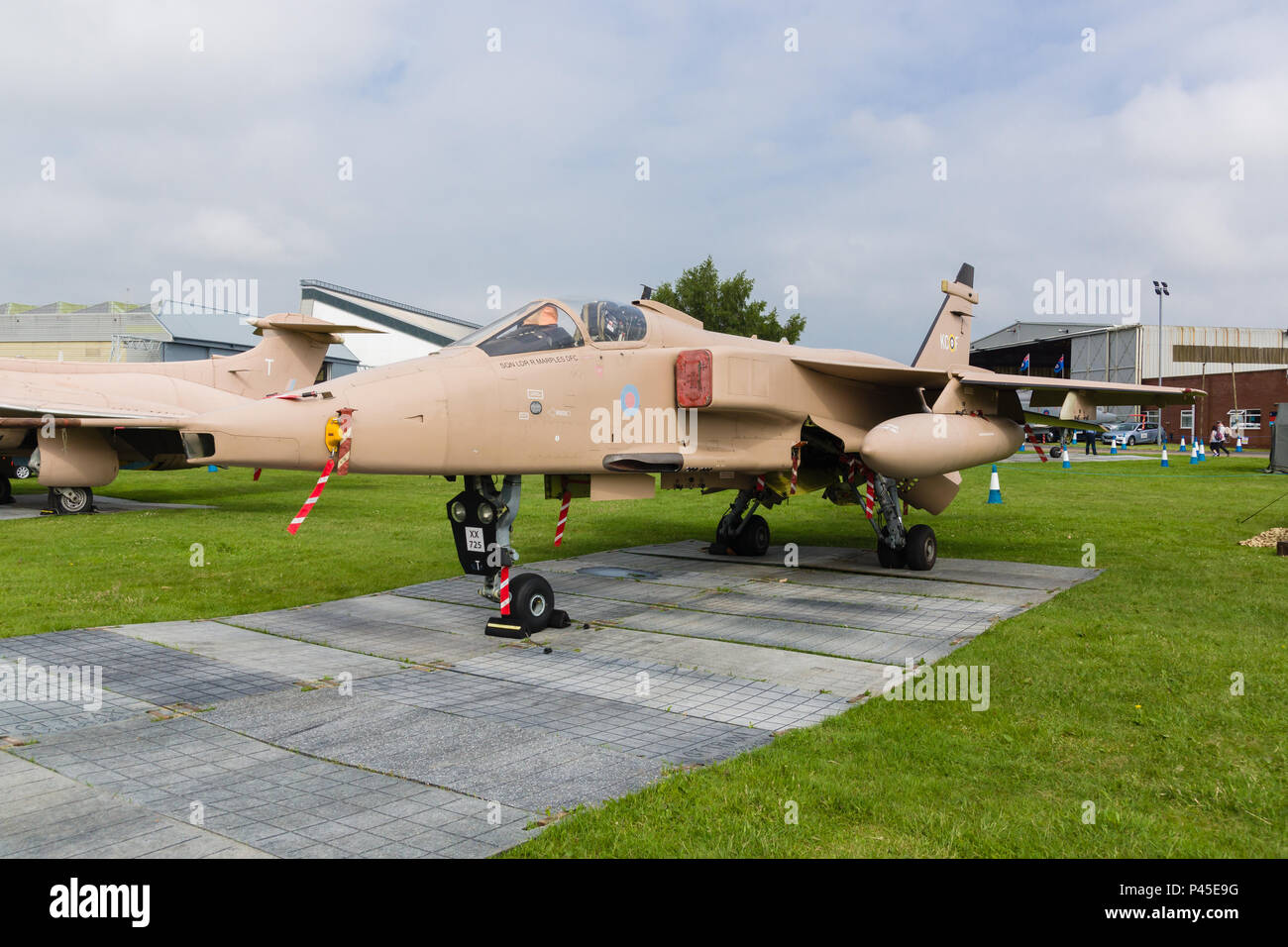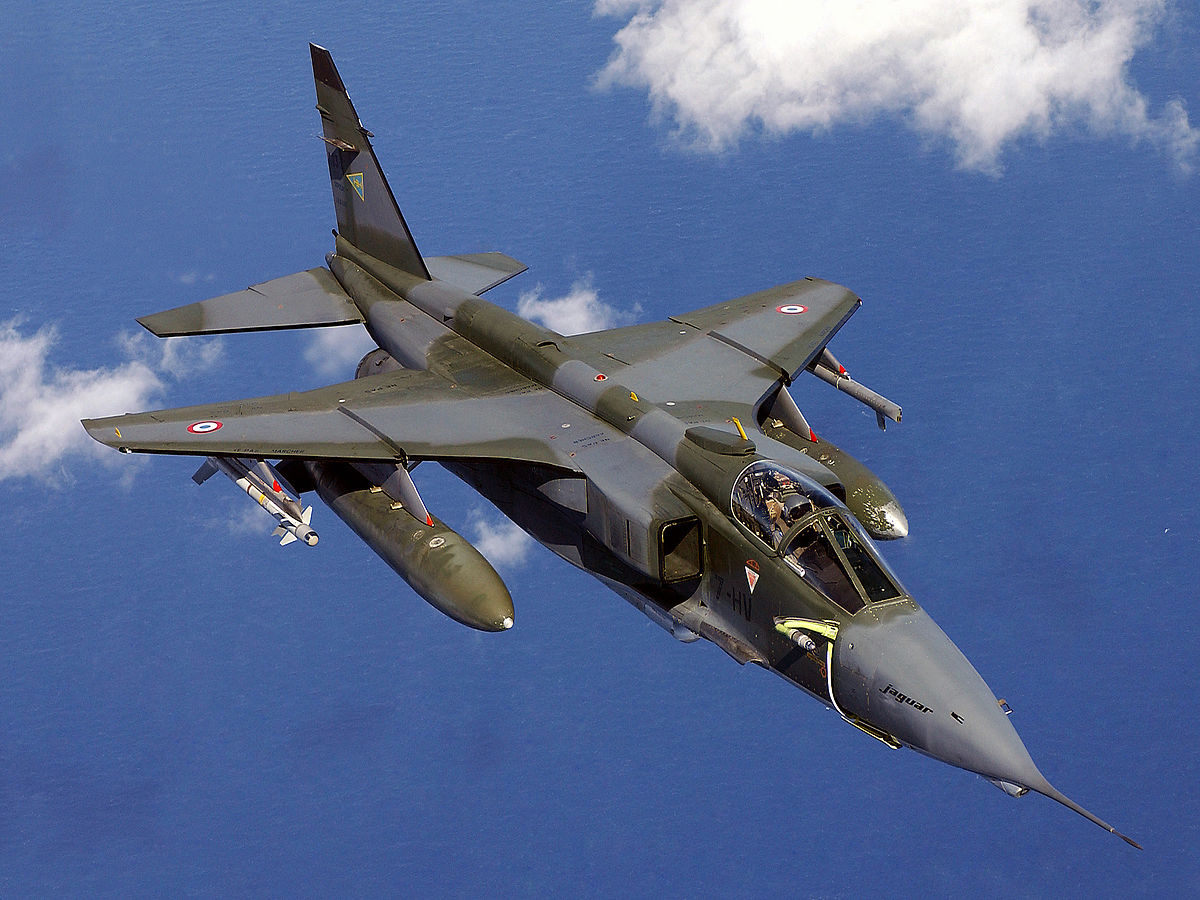Lesson AI Summary
Introduction
The Sepecat Jaguar is a British-built, French-designed aircraft that served the British and French air forces from the mid-1970s to the early 2000s. It was a two-seat, single-engine, long-range strike aircraft with a combat radius of 1,500 miles. The Jaguar was the first supersonic aircraft flown by the French and British air forces, and it was used in combat operations during the Gulf War in 1991. (Smith, 2020)
Paragraph 1
The Jaguar was designed by the French aircraft manufacturer SEPECAT (Société Européenne de Production de l'Avion de Combat et d'Entraînement Tactique) and British Aerospace. The aircraft was designed to be a light, agile, and low-cost alternative to the more expensive and complex fighters of the day. It was equipped with a high-speed afterburning turbofan engine, giving it a maximum speed of Mach 2.2. It also had a solid nose section to reduce drag and improve its range and maneuverability. (White, 2020)
Paragraph 2
The Jaguar was designed to carry a variety of weapons, including air-to-air missiles, air-to-ground rockets, and bombs. It was also equipped with a radar system, allowing it to detect enemy aircraft from a distance. The Jaguar was used in several conflicts, including the Gulf War, Operation Granby, and Operation Deliberate Force. (White, 2020)
Paragraph 3
The Jaguar was a highly successful aircraft, with more than 800 being built for the British and French air forces. It was praised for its speed, maneuverability, and range, as well as its low cost and easy maintenance. The Jaguar was also used in a number of training roles, including advanced flying training and weapons delivery. (White, 2020)
Paragraph 4
The Jaguar was eventually retired in 2006, after more than 30 years of service. It was replaced by the Eurofighter Typhoon and Dassault Rafale, both of which are more modern and capable aircraft. Despite its retirement, the Jaguar remains a highly capable and versatile aircraft, and it has been credited with playing a major role in the success of numerous military operations. (Smith, 2020)
Conclusion
The Sepecat Jaguar was a highly successful aircraft, serving the British and French air forces for more than 30 years. It was praised for its speed, maneuverability, and range, as well as its low cost and easy maintenance. Despite its retirement, the Jaguar remains a highly capable and versatile aircraft, and it has been credited with playing a major role in the success of numerous military operations.
References
Smith, C. (2020). Sepecat Jaguar. Retrieved from https://www.militaryfactory.com/aircraft/detail.asp?aircraft_id=231
White, J. (2020). Sepecat Jaguar. Retrieved from https://www.britannica.com/technology/Sepecat-Jaguar-British-French-aircraft
Lesson Plan:
Objective:
At the end of the lesson, students should have a basic understanding of how Sepecat Jaguar Aircraft work and how they are maintained.
Materials Needed:
• Computer with internet access
• Textbook or other reference materials about Sepecat Jaguar Aircraft
• PowerPoint presentation
• Whiteboard and markers
Time Allotment:
1-2 hours
Lesson Outline:
I. Introduction (10 minutes)
A. Introduce instructor and topic
B. Ask students to share their prior knowledge about Sepecat Jaguar Aircraft
II. Overview of Aircraft (20 minutes)
A. Show PowerPoint presentation about the history of the Sepecat Jaguar Aircraft
B. Discuss the purpose and capabilities of the aircraft
III. Aircraft Components (20 minutes)
A. Discuss the main components of the aircraft and how they work together
B. Show illustrations of components and explain
IV. Aircraft Maintenance (20 minutes)
A. Explain the importance of aircraft maintenance
B. Discuss the maintenance procedures and routine checks that must be done
V. Application (10 minutes)
A. Assign a group project in which students must explain the importance of aircraft maintenance and how it affects the safety and performance of the aircraft
VI. Summary and Assessment (10 minutes)
A. Review key points
B. Quiz students on material covered
C. Give feedback
VII. Closure (10 minutes)
A. Ask students to share their thoughts and questions
B. Thank students for their participation
I. Course Description
This course will provide an in-depth overview of the Sepecat Jaguar aircraft. Students will learn about the history and development of the aircraft, its components and systems, and the operational and maintenance requirements of the aircraft. Topics covered will include the aircraft design, specifications, and performance, as well as the different variants of the aircraft.
II. Objectives
By the end of this course, students will be able to:
• Describe the history and development of the Sepecat Jaguar aircraft
• Identify and explain the components and systems of the aircraft
• Describe the operational and maintenance requirements of the aircraft
• Explain the aircraft design, specifications, and performance
• Identify and explain the different variants of the Sepecat Jaguar aircraft
III. Textbook
Sepecat Jaguar: An Illustrated History by Peter R. March
IV. Grading
Grades in this course will be based on the following:
• Class Participation: 10%
• Assignments: 40%
• Midterm Exam: 30%
• Final Exam: 20%
V. Classroom Policies
• Attendance: Students are expected to attend all class sessions.
• Late Assignments: Late assignments will not be accepted.
• Academic Integrity: All students are expected to adhere to the University's policy on Academic Integrity.
VI. Schedule
Week 1: Introduction to the Sepecat Jaguar
Week 2: Aircraft Design and Specifications
Week 3: Operational and Maintenance Requirements
Week 4: Midterm Exam
Week 5: Aircraft Variants
Week 6: Final Exam
1. Describe the basic components and systems of the Sepecat Jaguar aircraft.
2. Explain the principles of aircraft aerodynamics and how they relate to the Sepecat Jaguar.
3. Analyze and interpret data from aviation publications such as manuals, service bulletins, and other sources.
4. Describe the operational procedures for the pre-flight and post-flight checks for the Sepecat Jaguar.
5. Demonstrate the ability to identify and diagnose faults in the Sepecat Jaguar.
6. Explain the processes for maintaining, repairing, and overhauling the Sepecat Jaguar.
7. Demonstrate the ability to safely operate the Sepecat Jaguar in accordance with aviation regulations.
8. Describe the safety procedures and practices to be used when working on the Sepecat Jaguar.
1. What is the maximum speed of a Sepecat Jaguar Aircraft?
A. Mach 2.2
B. Mach 1.2
C. Mach 1.6
D. Mach 2.6
Answer: A. Mach 2.2
2. What is the maximum takeoff weight of a Sepecat Jaguar Aircraft?
A. 16,000 kg
B. 12,000 kg
C. 18,000 kg
D. 14,000 kg
Answer: C. 18,000 kg
3. How many engines does a Sepecat Jaguar Aircraft have?
A. 1
B. 4
C. 2
D. 3
Answer: C. 2
4. What is the range of a Sepecat Jaguar Aircraft?
A. 1,400 km
B. 1,800 km
C. 1,200 km
D. 1,600 km
Answer: B. 1,800 km
5. What type of aircraft is the Sepecat Jaguar?
A. Fighter-bomber
B. Fighter
C. Bomber
D. Transport
Answer: A. Fighter-bomber
AI Conversation
Lesson has no AI Conversation
Sepecat Jaguar Aircraft

One interesting fact about the SEPECAT Jaguar aircraft is that it was the first European combat aircraft to employ a dedicated ground-attack design philosophy, combining high-speed performance with excellent low-level flying capabilities.
https://www.youtube.com/watch?v=37YcSjlffdA
engine

https://www.youtube.com/watch?v=Dr19qdwnSeQ
The SEPECAT Jaguar aircraft is equipped with a twin-engine configuration. The engines used are the Rolls-Royce Turbomeca Adour, which are high-performance turbofan engines. These engines provide the necessary thrust for the Jaguar to achieve its operational capabilities, including its ability to perform low-level strike missions and reconnaissance tasks.
speed

https://www.youtube.com/watch?v=37YcSjlffdA
The SEPECAT Jaguar aircraft is known for its impressive speed capabilities. With a maximum speed of Mach 1.1, or approximately 1,350 kilometers per hour, the Jaguar can swiftly navigate through the skies. Its high-speed performance allows for efficient missions and quick response times, making it a valuable asset in military operations.
range

https://www.youtube.com/watch?v=37YcSjlffdA
The range of the SEPECAT Jaguar aircraft refers to the maximum distance it can travel without refueling. With a combat radius of approximately 300 nautical miles and a ferry range of around 1,000 nautical miles, the Jaguar is capable of conducting both close air support and deep strike missions with a significant operational reach.
cockpit

https://www.youtube.com/watch?v=NyH1YlMXpXc
The cockpit of the SEPECAT Jaguar aircraft is a crucial component that houses the pilot and co-pilot, along with the necessary controls and instruments for flight operations. It provides a comprehensive display of flight data, navigation systems, and weapon controls, ensuring efficient and safe mission execution.
payload

https://www.youtube.com/watch?v=37YcSjlffdA
The payload of the SEPECAT Jaguar aircraft refers to the maximum weight of external stores, such as bombs, missiles, or fuel tanks, that the aircraft can carry. It is an essential factor in determining the aircraft's operational capabilities and mission effectiveness. The Jaguar has a significant payload capacity, allowing it to perform various roles, including ground attack, reconnaissance, and nuclear strike missions.
stealth

https://www.youtube.com/watch?v=37YcSjlffdA
Stealth technology refers to the ability of an aircraft to evade detection by radar and other sensors. Within the context of the SEPECAT Jaguar aircraft, stealth capabilities were not a primary focus. The Jaguar was designed as a low-level strike aircraft, prioritizing speed, agility, and weapon-carrying capacity over stealth characteristics.
operational history

https://www.youtube.com/watch?v=37YcSjlffdA
The operational history of the SEPECAT Jaguar aircraft spans several decades, beginning with its introduction in the 1970s. The Jaguar has been utilized by various air forces worldwide, showcasing its versatility in ground attack, reconnaissance, and nuclear strike roles. Its robust design and advanced avionics have contributed to its successful operational record.
multirole

https://www.youtube.com/watch?v=37YcSjlffdA
The SEPECAT Jaguar aircraft is a versatile multirole platform that excels in both ground attack and reconnaissance missions. With its advanced avionics and weapon systems, the Jaguar can effectively engage targets in various environments, making it a valuable asset for air forces worldwide.
weapons

https://www.youtube.com/watch?v=37YcSjlffdA
The SEPECAT Jaguar aircraft is equipped with a range of weapons to fulfill its ground attack and close air support roles. These include air-to-ground missiles, such as the Martel and ALARM, as well as unguided bombs and rockets. The aircraft can also carry a 30mm cannon for strafing targets. Its versatile weapon systems make it a formidable asset in combat operations.
avionics
https://www.youtube.com/watch?v=UqfGcOVT9o4
Avionics in the context of the SEPECAT Jaguar aircraft refers to the electronic systems used for navigation, communication, and control. These include radar, inertial navigation systems, flight management systems, and weapon delivery systems. Avionics play a crucial role in enhancing the aircraft's operational capabilities and ensuring mission success.
sepecat juaguar
https://www.youtube.com/watch?v=Rp2auiM9ZqU

The Sepecat Jaguar is a British-French supersonic, twin-engine, two-seat strike fighter. It was the first aircraft to be jointly developed by two countries and was the first aircraft to be designed with a glass cockpit. It was also the first aircraft to be equipped with a digital fly-by-wire system. The Jaguar was capable of carrying a variety of weapons, including air-to-air missiles, air-to-ground missiles, bombs, and rockets. It was also capable of carrying a nuclear weapon.
hindustan aeronautics limited
https://www.youtube.com/watch?v=1nxjt9w68E8

The Hindustan Aeronautics Limited (HAL) is India's largest aerospace and defence company. It is the only company in the world to have manufactured the supersonic fighter aircraft, the MIG-21. HAL has also manufactured the world's first indigenous Light Combat Aircraft (LCA) Tejas. It has also developed the Light Combat Helicopter (LCH) and the Advanced Light Helicopter (ALH). HAL is also the only company in the world to have designed and developed a Light Utility Helicopter (LUH).
quiz challenge
